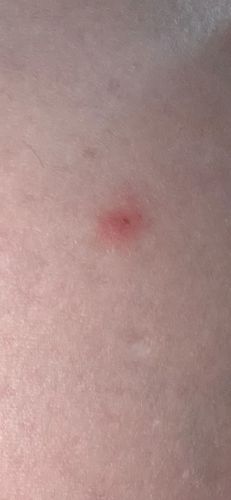Flea (Flea Bite)
Scientific Name: Siphonaptera (order); Ctenocephalides felis (Cat Flea), Ctenocephalides canis (Dog Flea)
Order & Family: Order: Siphonaptera, Various families (e.g., Pulicidae)
Size: Adult fleas are typically 1.5 to 3.3 mm (0.06 to 0.13 inches) in length.

Natural Habitat
Fleas thrive in warm, humid environments. They are commonly found in carpets, bedding, pet resting areas, cracks in floors, and outside in shaded, moist areas with leaf litter. They live on host animals (mammals and birds) but eggs, larvae, and pupae develop in the environment (e.g., pet bedding, carpets).
Diet & Feeding
Adult fleas are obligate hematophagous parasites, meaning they feed exclusively on the blood of their animal hosts. Larvae feed on organic debris, including adult flea feces (which contain digested blood).
Behavior Patterns
Fleas are excellent jumpers, able to leap significant distances to find a host. They reproduce rapidly, with females laying many eggs after a blood meal. Larvae are typically found in dark, moist places, and pupae are encased in a cocoon that can remain dormant for extended periods. Flea bites often appear as small, red, itchy bumps, sometimes in clusters or a line, similar to the image provided. They tend to bite around ankles, lower legs, or other areas accessible from the ground or where pets rest.
Risks & Benefits
Risks: Flea bites cause itchy, irritating welts and can lead to skin irritation, allergic reactions (flea allergic dermatitis), and secondary bacterial infections from scratching. Fleas can also transmit various diseases, including tapeworms (e.g., Dipylidium caninum) to pets and humans, plague (Yersinia pestis, historically significant), and murine typhus (Rickettsia typhi). Benefits: From a human perspective, fleas offer no direct benefits and are primarily considered pests. In ecological terms, they are part of the food chain for other insects and small animals, but their parasitic nature makes them detrimental to host health.
Identified on: 9/6/2025